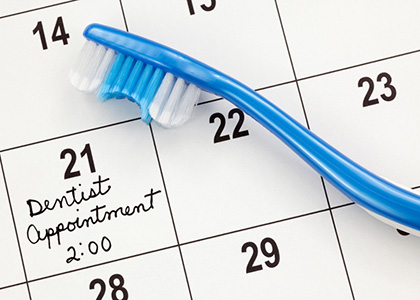Leukoplakia: Recognize and Treat It Early!
Leukoplakia is one of the most common oral conditions, often appearing as white or gray patches on the lips, palate, tongue, or gums. This condition can be more than just an aesthetic issue—it may pose serious health risks, as it can be associated with oral cancer. This article provides a detailed examination of leukoplakia’s characteristics, causes, diagnosis, treatment, and prevention.
What is Leukoplakia?
Leukoplakia is characterized by persistent white or gray patches on the mucous membranes of the mouth. These patches are not easily wiped away and are usually painless. While the exact cause of leukoplakia is often unclear, it is frequently associated with irritation in the mouth, smoking, and alcohol consumption. Early recognition and treatment are crucial, as certain forms of leukoplakia can become malignant, potentially leading to the development of oral cancer.
Symptoms of Leukoplakia:
Leukoplakia is marked by persistent white or gray patches on the oral mucous membranes. These patches are typically painless and can be flat or slightly raised. Although the symptoms of leukoplakia often cause no discomfort, the increased risk of developing oral cancer makes it essential to identify and treat this condition promptly.
Most Common Symptoms
White or Gray Patches in the Mouth: The most common sign of leukoplakia. These patches usually cannot be scraped off and can appear anywhere in the mouth, including the tongue, gums, and palate. They can be either flat or slightly raised and generally do not cause pain.
Tiny White Spots on the Lips or Mouth: Leukoplakia can also manifest as tiny white spots that appear on the lips or inside the mouth. These spots are painless but can merge into larger patches over time.
White Tongue or Patches on the Tongue: Typically appearing as white patches, leukoplakia on the tongue can cover small areas or large portions and usually does not cause discomfort. Other causes of a white tongue include fungal infections or mechanical irritation.
White Spots in the Throat: White spots may also appear at the back of the throat as part of leukoplakia. These spots are painless but should be checked by a doctor for an accurate diagnosis if they persist.
Importance of Recognizing Symptoms:
Leukoplakia’s symptoms can resemble other oral conditions, such as fungal infections or irritation. However, leukoplakia patches do not disappear on their own and can evolve into malignant lesions over time.
Causes of Leukoplakia: What Triggers It?
Risk Factors
Leukoplakia can arise from several sources, with the most common including:
Smoking: Using tobacco products, including cigarettes, cigars, and pipes, is a significant risk factor.
Alcohol Consumption: Excessive alcohol intake can also contribute to the development of leukoplakia.
Mechanical Irritation: Constant irritation from teeth, dental prostheses, or other oral devices.
Genetic Predisposition: Some genetic factors may increase the likelihood of developing leukoplakia.
Diagnosis and Treatment of Leukoplakia
Identifying and treating leukoplakia involves expert evaluation and various therapeutic options. Early detection and timely intervention are crucial for preserving oral health and preventing complications.
Specialist Evaluation
Oral Examination: Typically begins with a thorough examination of the oral mucosa to identify any white or gray patches. Special attention is given to areas prone to leukoplakia such as the tongue, gums, palate, and the inner surfaces of the lips.
Biopsy: If there is suspicion of leukoplakia, a biopsy may be conducted to ensure an accurate diagnosis. This involves taking a small sample from the patch for lab analysis to determine whether the lesion is benign or contains cancerous cells, necessitating immediate treatment.
Treatment Options
Treatment strategies for leukoplakia vary based on the severity of the condition and associated risk factors.
Quitting Smoking: This is crucial in treating leukoplakia. Stopping smoking not only promotes the disappearance of leukoplakia patches but also reduces the risk of oral cancer.
Eliminating Irritants: Removing irritants, such as improperly fitting dentures or sharp teeth, can decrease leukoplakia risk and aid the healing of existing patches.
Medical Interventions: In severe cases, medical interventions may be necessary:
Laser Removal: A minimally invasive procedure that involves less pain and recovery time compared to traditional surgeries.
Surgical Removal: For more severe or extensive cases of leukoplakia, surgical removal may be required. This procedure fully removes the patches and sends the tissue for histological examination.
Cryotherapy: Involves freezing the leukoplakia patches with liquid nitrogen, destroying abnormal cells. This method is particularly useful for smaller patches.
Complications of Leukoplakia
The most concerning complication of leukoplakia is its potential to develop into oral cancer. Although not all leukoplakia patches become cancerous, if untreated, they have a higher risk of malignancy. This underscores the importance of early detection and treatment.
Preventing Leukoplakia
To prevent leukoplakia, consider the following lifestyle tips:
Avoid Smoking: Do not smoke or use tobacco products.
Moderate Alcohol Consumption: Reduce alcohol intake.
Regular Oral Hygiene: Maintain diligent oral hygiene practices.
Regular Dental Checkups: Attend regular dental checkups to detect any early changes.
Frequently Asked Questions About Leukoplakia
What causes leukoplakia? Common causes include smoking, alcohol consumption, and mechanical irritation.
How is leukoplakia treated? Treatments include quitting smoking, eliminating irritants, and possibly medical interventions.
How common is malignant transformation of leukoplakia? The risk varies, but timely treatment can significantly reduce it.
What should I do if I notice symptoms of leukoplakia? Consult a dentist for an accurate diagnosis and appropriate treatment.
Recognizing and treating leukoplakia early is crucial to prevent serious complications. If you notice any unusual symptoms in your mouth, do not hesitate to seek professional advice.
Don't ignore the signs! Contact our specialist today!




















